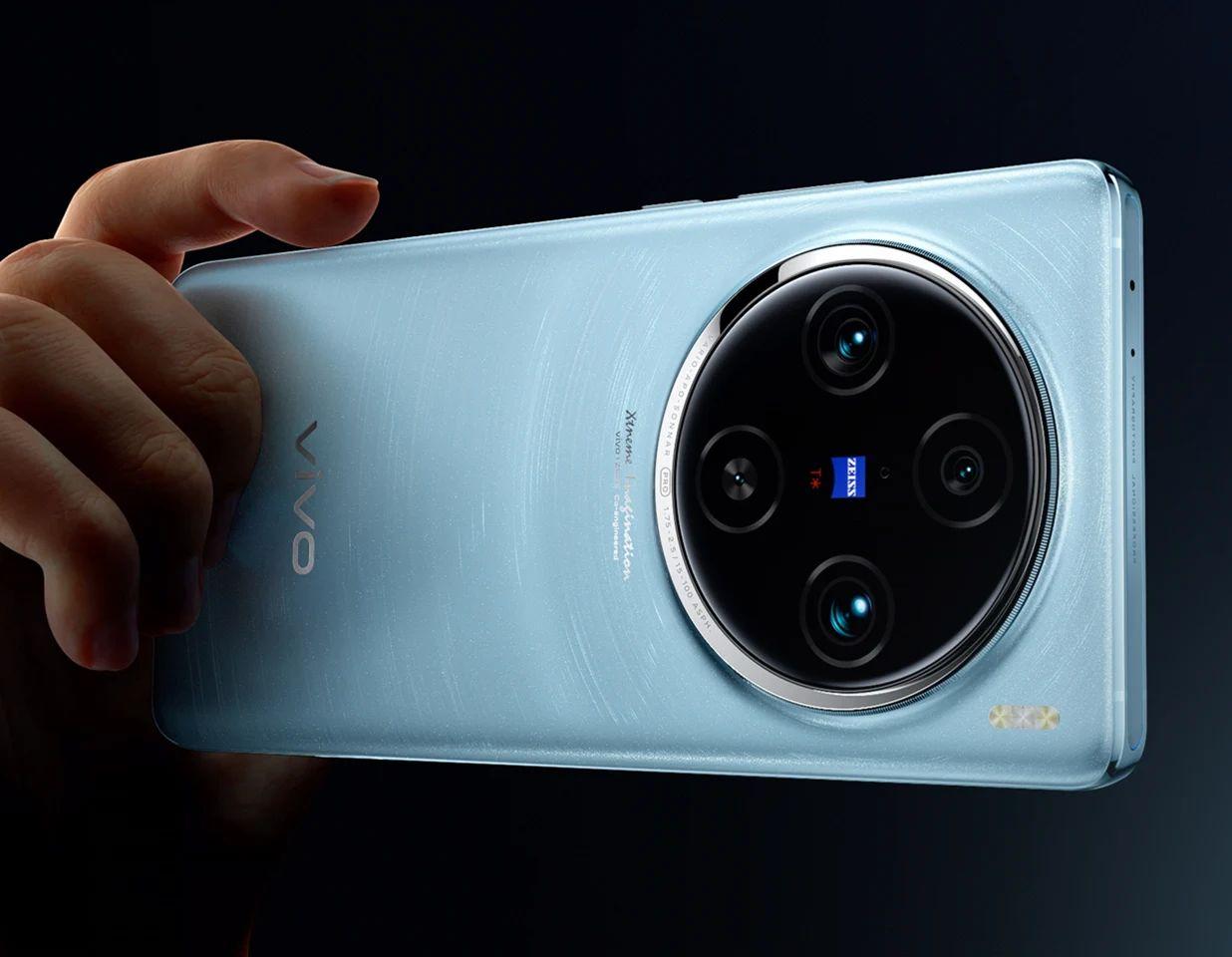Hot on the heels of last month’s launch in China, Vivo has announced that the follow up to February’s photo-centric X90 series smartphones has been opened to international markets. The X100 features an upgraded Zeiss imaging system, Mediatek’s flagship chipset and more battery life.
As before, the new flagship handsets come in two flavors: the X100 and X100 Pro. We’ll focus on the Pro here, and kick off with the rear cameras. The main shooter shapes up with a 1-inch-type image sensor boasting 50 megapixels that’s been treated to “Optical Precision Calibration” for the promise on “consistent image sharpness and quality” as well as “SLR-level” stabilization chops.
The other modules in the circular camera bump are also 50-MP snappers. The so-called floating telephoto is reported to be the first mobile imaging system to meet the Zeiss Vario-Apo-Sonnar standards for reduced chromatic aberration, and comes with a f/2.5 aperture “to ensure high image quality in various scenarios, even from 6x to 10x.” The remaining camera is a super-wide angle unit.

Vivo
A customized Vivo V3 imaging chip enables 4K Cinematic Portrait video, with Zeiss bokeh also available for those desirable fuzzy backgrounds. And a Multifocal mode allows users to “take professional portraits with focal length up to 100 mm.”
Inside, the V3 chip is joined by Mediatek’s Dimensity 9300 chipset with octa-core processing for “a massive leap in performance compared to its predecessor” plus integrated graphics. Up to 16 GB of RAM and 1 TB of storage can be had, and the 5,400-mAh battery supports wireless fast-charging.
Rounding out the key specs are a 6.78-inch OLED display at 1,260 x 2,800 pixels with a 120-Hz dynamic refresh rate and peak brightness of 3,000 nits for sunlight-viewable visuals, a 32-MP selfiecam for 1080p video chats, Bluetooth 5.4 and Wi-Fi 7 as well as 5G, and IP68 dust- and water-resistance.
The standard X100 flavor rolls out as a slightly less capable model. Vivo has yet to confirm exactly where in the world folks will be able to get hold of its new flagships, but they’re unlikely to make it to US shores.
Source: Vivo
Source of Article
